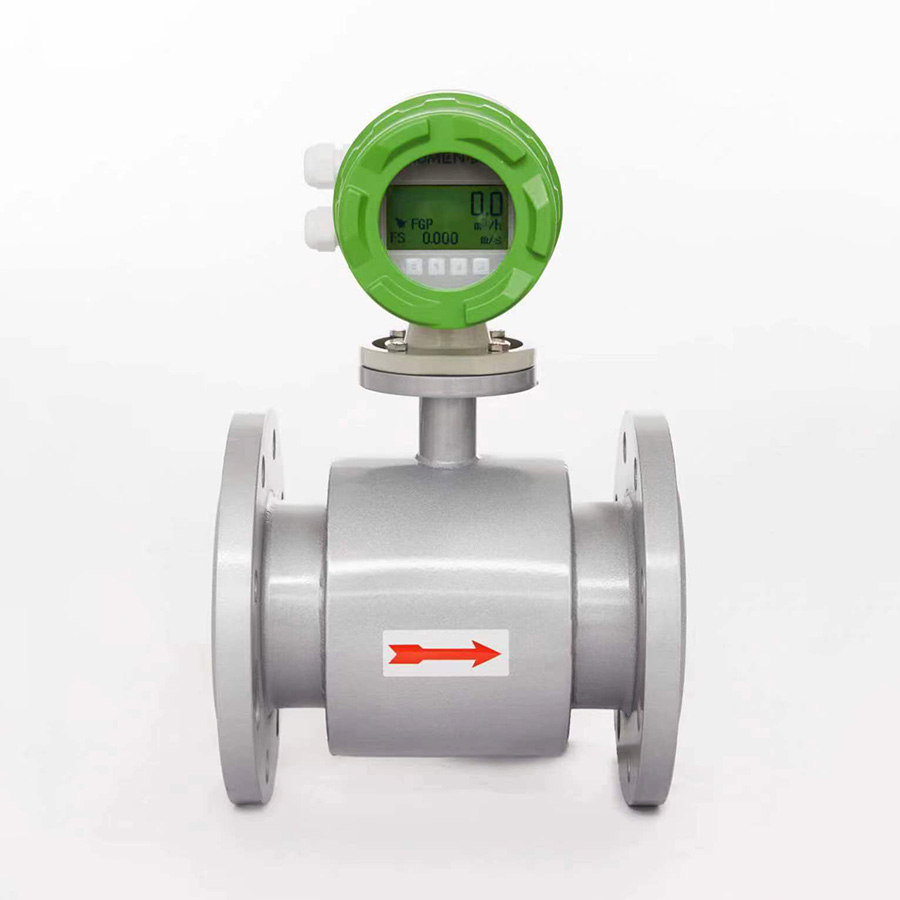Integrated electromagnetic flowmeter
- Tel:15212180111
- Fax:
- Email:micmenon@163.com
Description
The integrated electromagnetic flowmeter is an inductive instrument that measures the volume flow of conductive medium in the pipe according to Faraday's electromagnetic induction law. It uses the embedded technology of single chip computer to realize digital excitation. At the same time, it uses CAN field bus on the electromagnetic flowmeter.
The integrated electromagnetic flowmeter can output 4~20mA current signal for recording, regulating and controlling while meeting the requirements of field display. It has been widely used in industrial technology and management departments such as chemical industry, environmental protection, metallurgy, medicine, paper making, water supply and drainage, etc.
In addition to measuring the flow of general conductive liquid, the integrated electromagnetic flowmeter can also measure the volume flow of liquid-solid two-phase flow, high-viscosity liquid flow and salt, strong acid and strong alkali liquid.
Performance characteristics
◆ The instrument has simple and reliable structure, no movable parts and long service life.
◆ There are no intercepting and blocking parts, and there is no pressure loss and fluid blockage.
◆ It has no mechanical inertia, fast response and good stability, and can be applied to automatic detection, adjustment and program control system.
◆ The measurement accuracy is not affected by the type of the measured medium and its physical parameters such as temperature, viscosity, density and pressure.
◆ Different combinations of polytetraethylene or rubber lining and Hc, Hb, 316L, Ti and other electrode materials can meet the needs of different media.
◆ There are many types of flow meters, such as pipeline type and plug-in type.
◆ The EEPROM memory is adopted, and the measurement and operation data storage protection is safe and reliable.
◆ It has two types: integrated type and separated type.
◆ High definition LCD backlight display.
technical parameter
◆ Instrument accuracy: pipe-type 0.5 and 1.0; Plug-in grade 2.5
◆ Measuring medium: conductivity greater than 5 μ S/cm of various liquid and liquid-solid two-phase fluids.
◆ Flow rate range: 0.2~8m/s
◆ Working pressure: 1.6MPa
◆ Ambient temperature: - 40 ℃~+50 ℃
◆ Medium temperature: polytetraethylene lining ≤ 180 ℃
Rubber lining ≤ 65 ℃
◆ Explosion-proof sign: Exmibd Ⅱ BT4
◆ Explosion-proof certificate No.: GYB01349
◆ External magnetic interference: ≤ 400A/m
◆ Shell protection: integrated type: IP65;
Separated type: sensor IP68 (5 meters underwater, only limited to rubber lining)
Converter IP65
◆ Output signal: 4 ~ 20mA.DC, load resistance 0 ~ 750 Ω
◆ Communication output: RS485 or CAN bus
◆ Electrical connection: M20 × 1.5 internal thread, φ 10 Cable hole
◆ Power supply voltage: 90 ~ 220V.AC, 24 ± 10% V.DC
◆ * * * Large power consumption: ≤ 10VA
Type selection of integrated electromagnetic flowmeter
◆ Range confirmation
The medium flow rate measured by the general industrial electromagnetic flowmeter should be 2~4 m/s. Under special circumstances, the low flow rate of * * * should not be less than 0.2 m/s, and the high flow rate of * * * should not be more than 8 m/s. If the medium contains solid particles, the common flow rate should be less than 3m/s to prevent excessive friction between the lining and the electrode; For viscous fluid, the flow rate can be greater than 2 m/s. A larger flow rate will help to automatically eliminate the effect of viscous substances attached to the electrode and improve the measurement accuracy.
Under the condition that the range Q has been determined, the size of the flowmeter diameter D can be determined according to the range of the above flow rate V, and its value is calculated by the following formula:
Q=πD2V/4
Q: Flow (m2/h) D: pipe inner diameter V: flow rate (m/h)
The range Q of the integrated electromagnetic flowmeter should be greater than the expected * * * large flow value, while the normal flow value should be slightly greater than 50% of the full scale scale of the flowmeter.



